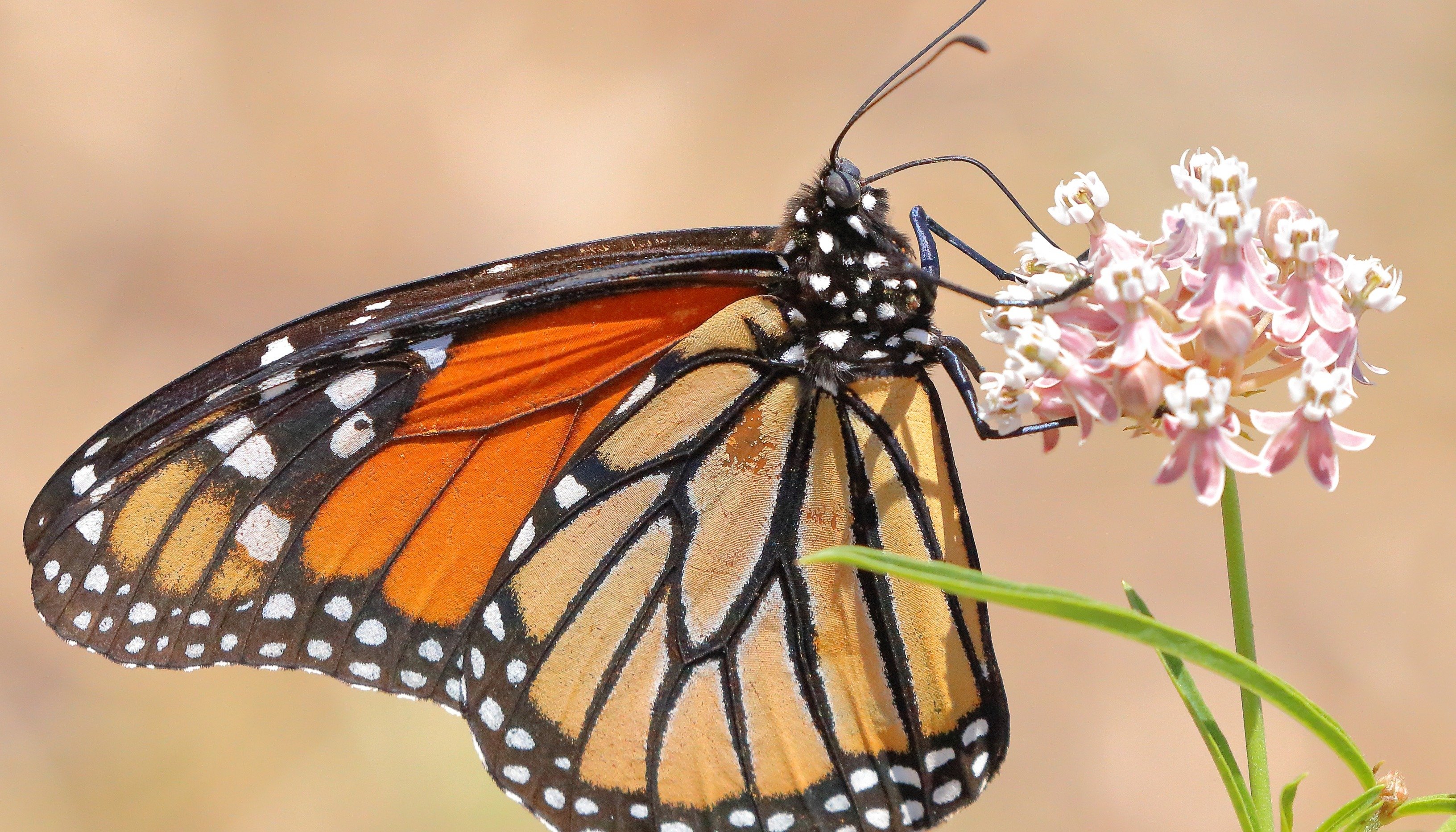Adaptation is a mechanism in nature that helps plants and animals evolve to withstand new environments. After all, the ability to adapt to changing conditions is critical to resilience and longevity for any species. One small, but iconic species that is flexing their resilience in 2022 is the Western monarch butterfly, an invertebrate with a surprising capacity to respond and adapt to both positive and negative environmental changes.
After a jaw-droppingly low count of 1,900 butterflies in 2020 – roughly 99% lower than the year prior – the scientific community sounded alarms about the possible impending extinction of the charismatic species. Scientists expected the worst with the latest count in 2021, but to their surprise, the population count had bounced back to around 250,000 butterflies.
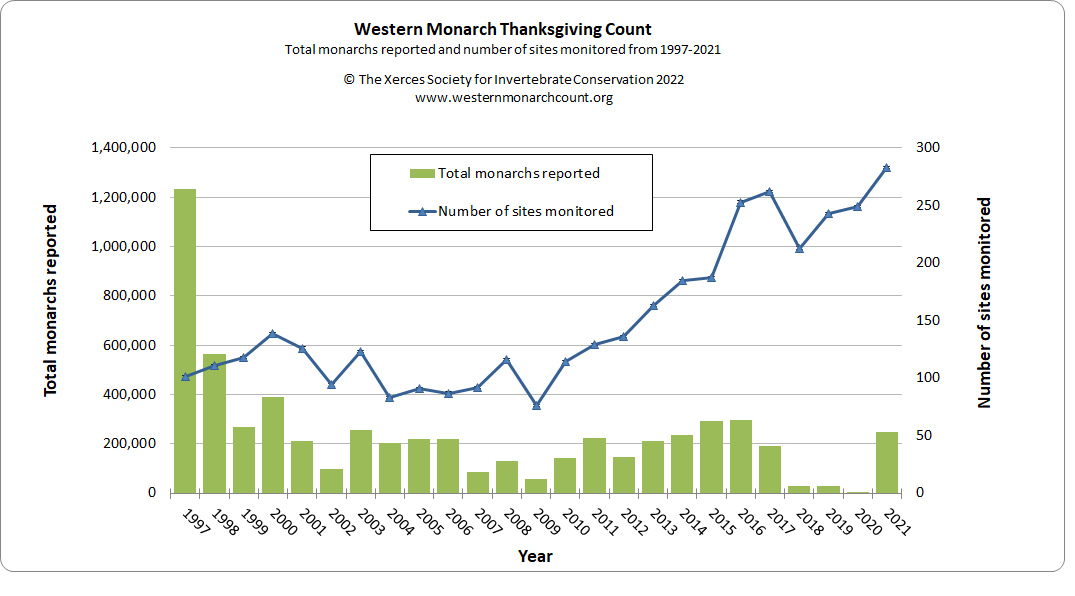
Graph of total abundance estimates with number of sites monitored from 1997-2021 (Source: The Xerces Society for Invertebrate Conservation 2022).
“The latest population count is encouraging, but we should remain cautiously optimistic,” David Mauk, Natural Resource Technician at the Authority notes. Mauk notes that 2021’s count is still 80% lower than 20 years prior, consistent with the species’ steady decline since the turn of the century.
“There is perhaps no longer immediate threat of extinction, but we need to be sure we are working to prevent the extinction from happening down the road.”
Despite the rebound in population counts in 2021, experts are theorizing that the numbers didn’t change due to a dramatic population increase. In fact, for the first time, it could be that we were simply looking in the wrong place.
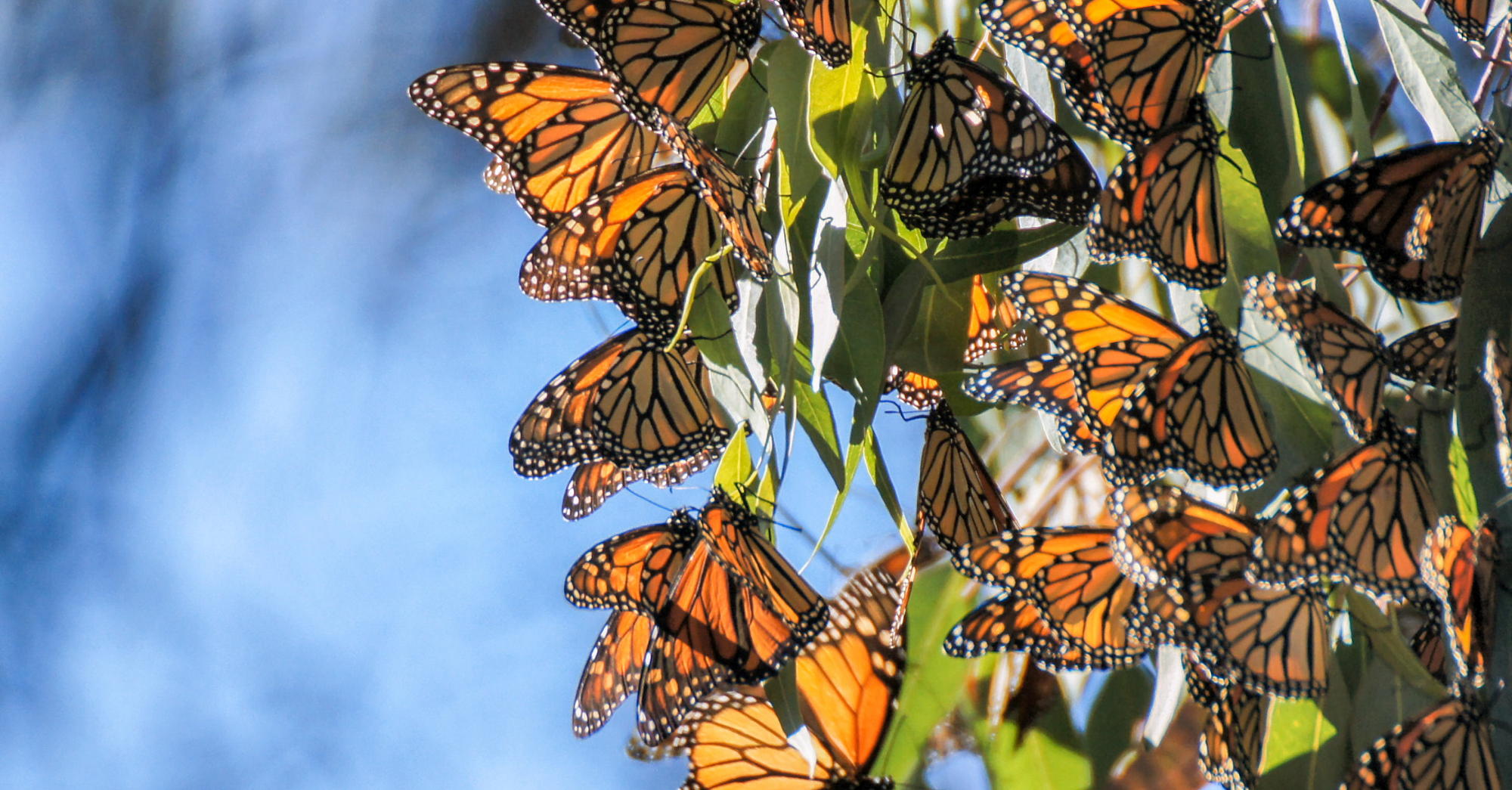
Every December, monarch butterflies in the west have consistently migrated to the coast to overwinter. And every year, the monarch butterfly population count is conducted in those areas. However, due to worsening drought conditions along the west, it appeared that in 2020, these butterflies collectively changed their migration paths to stay inland in places that had reliable water sources and habitat – places like technology and business campuses, urban gardens and natural areas. These pockets of habitat, more than monarchs’ usual habitat, proved themselves as reliable sources of water, shade, and milkweed, the only source of food for monarch caterpillars.
“They used to have a stable migration that we thought they could count on,” says David Mauk, Natural Resource Technician at the Authority. “But it’s looking like it may not be, and we don’t know what will happen, so we need to be ready.”
To help monarch butterflies increase their resilience from multiple angles, the Open Space Authority is working to protect, create and promote viable monarch butterfly habitat that stretches from the Santa Clara Valley, all the way up to the coast where they typically overwinter. The South Bay is full of viable habitat for monarch butterflies - riparian ecosystems with water-rich soil, well shaded areas, and milkweed plants that are essential for monarch caterpillars.
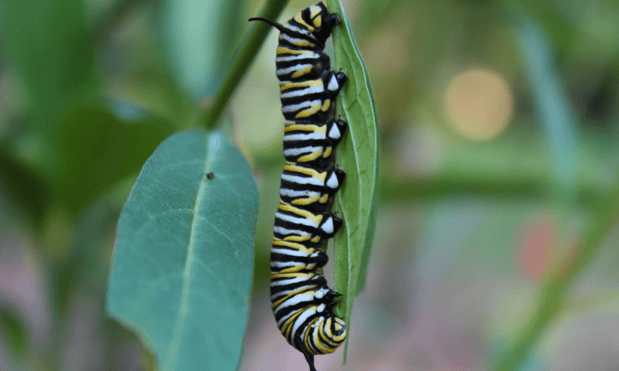
According to Open Space Authority Natural Resources team, improving and increasing this habitat is critical. Spearheaded by Resource Management Program Manager Galli Basson, the Authority is working on a large-scale effort to create and improve pollinator habitat throughout Authority-managed lands, including the protected lands of the Coyote Valley. These efforts include planting narrow-leafed milkweed and other plants that produce nectar to feed monarch butterflies and caterpillars.
Milkweed is now being planted, mapped, and protected throughout the Authority’s managed lands, and these efforts are aided by lifelong conservationist and volunteer, Dave Poeschel, who has worked to protect monarch habitat in the region for over a decade.
“The ultimate goal is resilience for the monarch butterfly by creating a chain of habitats stretching from north to south along different creeks that provides butterflies with steppingstones to get from habitat to habitat,” Mauk puts it. “We are trying to facilitate their migration to the coast when conditions are right for them, but also want to provide them with a place to stop if they need to overwinter here instead.”
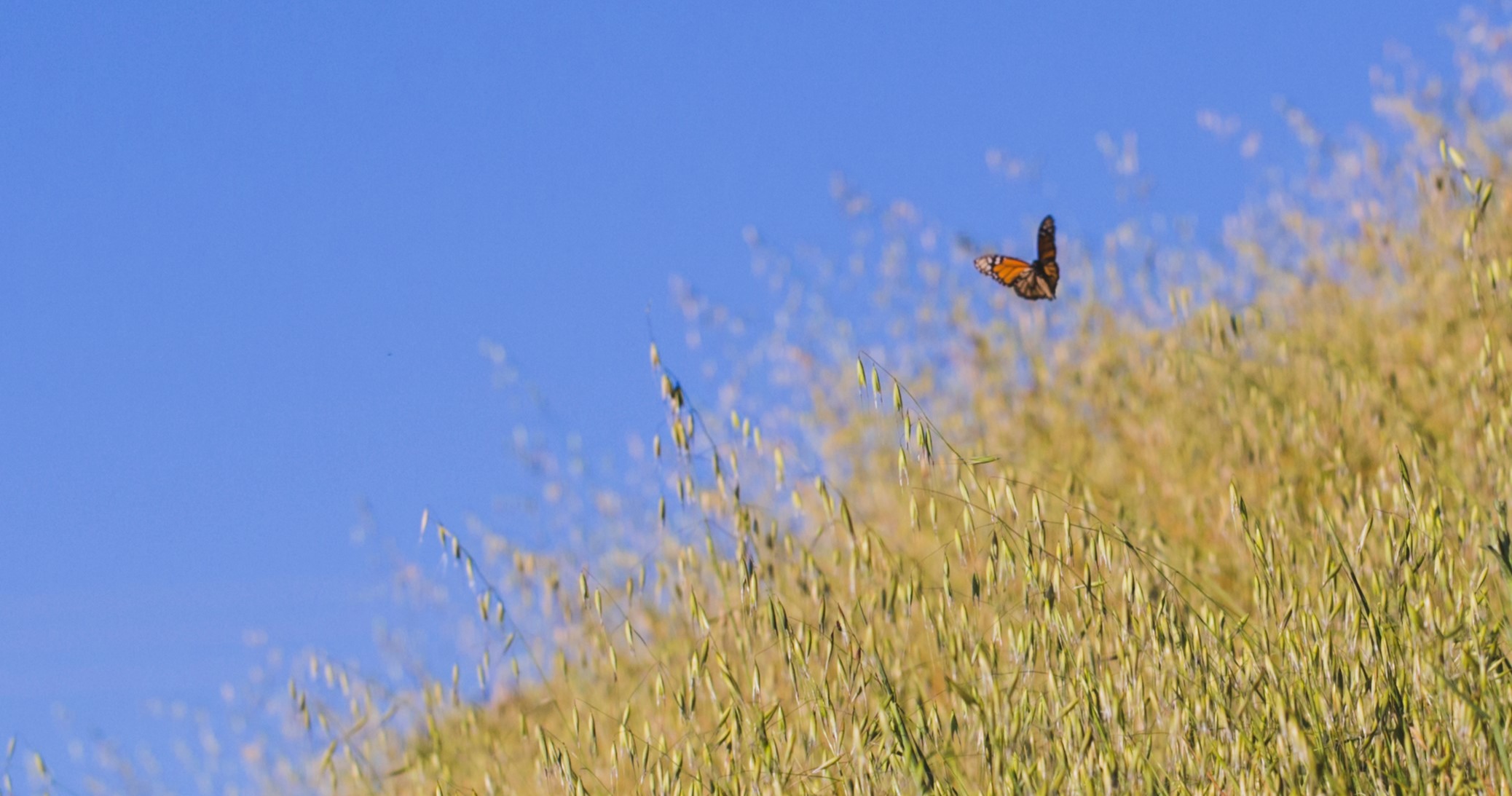
Since the alarming count in 2020, Mauk has worked tirelessly to identify milkweed plants on Authority-managed preserves. After logging the plant, he maps their location, and protects them using a cage which prevents the milkweed from getting eaten or walked on by wildlife.
As climate change progresses and periods of rain are shorter and earlier, this work is becoming increasingly more important, and you can help! If you see milkweed when enjoying nature, take a picture from the trail and upload it to the Monarch Milkweed Mapper. You can even plant milkweed in your own backyard or window box to provide habitat for these important pollinators!
Read more about the Authority’s work for the monarch butterflies and what you can do to help here.
